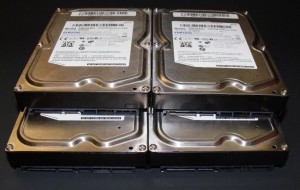Today we are going to take an in-depth look at CacheCade, a new approach to storage systems that allows the perfect fusion of HDD capacity and SSD speed.
With many large databases and enterprise users ‘caught in the middle’ with large HDD arrays, yet needing more performance from their existing infrastructure, CacheCade is a great option that allows the best of both worlds.
NOTE: We have an updated version of CacheCade Pro 2.0 now posted, that supersedes this review.
The concept behind CacheCade will be integrated into several consumer products by several big players in the computing industry, thus becoming very prevalent in the long term storage outlook. Both the enterprise and consumer segments are coming to grips with the changing landscape of storage brought about by the emergence of the SSD as the premium storage option. As always, the enterprise applications are trickling down into the consumer realm, and LSI is right at the forefront of development with this new method of storage enhancement.
CacheCade
CacheCade is a new technology that falls into a category of “Tiered Storage” that allows is for another ‘Tier’ of cache to be built upon a current HDD subsystem. Currently in a typical large enterprise server, you have RAID controllers connected to large mass arrays of HDD that serve data out to its ‘customers’. There is a level of cache that is built into the controller, however, this amount of cache is very small. It is usually around 1GB, and rarely above 4 GB of RAM and mainly used to alleviate high write loads. On server arrays where the amount of data can go into hundreds of Terabytes, the 1-4GB of cache is rather inconsequential.
Enter the CacheCade theory which creates a supplemental layer of cache between the HDD and the controller. This cache can be much larger using SSDs that enjoy much lower access times and much higher random I/O speeds than HDD can ever hope to attain.
Lets start with an understanding of the advantages and disadvantages of each solution:
Pros
- Low Cost-When it comes to cost per GB, HDD reigns
- Usually involve existing infrastructure
- High storage capacity
Cons
- High power consumption
- High Latency (Slow)
- Large footprint
- Produce heat/need cooling
Pros
- Extreme speed compared to HDD
- Low latency
- Low power requirements
- Generate low amount of heat (negligible)
- Small footprint
Cons
- Price Per-GB is very high, especially for SLC drives
- Low capacity
- Endurance concerns
In the end, we have a complex mixture of factors here for companies to consider. If you already have a large system of HDD equipped servers, then you already have your infrastructure in place. Power, Cooling and Space are all very large concerns in these types of scenarios, however, if you are looking to speed up your systems to handle larger loads, you will need more of all three. More power, cooling and space will be required.
Switching to an all SSD or SAS HDD setup can be very cost prohibitive, and a very complex process, especially in scenarios where downtime is absolutely not tolerated. SSDs are much easier in terms of power, cooling and space, notwithstanding the fact that one SSD can do the work of several HDDs.
The key is to accelerate the performance of your existing HDD arrays without incurring the massive costs and investments that a total switch to SSD would require.
That is exactly the concept behind CacheCade.
NEXT: Nuts and Bolts
Page 1- Introduction
Page 2- Nuts and Bolts
Page 3- Maximizing Benefits
Page 4- MLC vs SLC
Page 5- Test Bench and Protocol
Page 6- Single Zone Read
Page 7- Hot-Warm-Cool-Cold
Page 8- Conclusion
 The SSD Review The Worlds Dedicated SSD Education and Review Resource |
The SSD Review The Worlds Dedicated SSD Education and Review Resource | 

